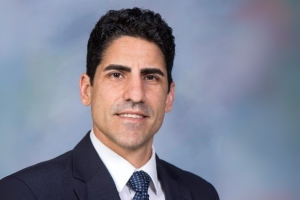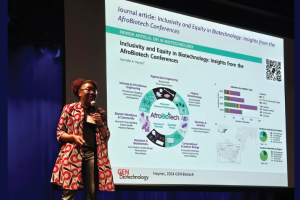The following article is presented by the Societal Impact Operating Council (SIOC), to foster discussion and provoke thought. We welcome your comments and input.
By Adina D. Sterling
When I was nine years of age my father bought me my first chemistry set. At the time I thought it was a strange gift - I'd never expressed an interest in chemistry and could barely pronounce the names of the chemical compounds that came in the kit. However, my father's own enthusiasm for chemistry was infectious. As we opened the gift together he carefully explained each chemical compound and what it could do. That's when it hit me. I could use the chemical compounds to
create something. From that moment, I was hooked.
I doubt my father pondered that in many ways I was an atypical chemistry student. It mattered little to him that most girls my age were playing with dolls, not mixing chemical compounds together. Yet like many children, because I had a role model with an enthusiasm for a scientific subject, new worlds were opened before me.
Thirty-seven years ago Congress passed the Women in Science and Technology Equal Opportunity Act, which declared it "the policy of the United States that men and women have equal opportunity in education, training, and employment in scientific and technical fields." In 2013 we have yet to achieve equality in STEM professions. According to the U.S. Census Bureau's American Community Survey (ACS, 2009), women comprise 48 percent of the U.S. workforce but just 24 percent of STEM professionals. In other words, half as many women are working in STEM jobs as we should expect if gender representation in STEM professions were to match participation in the overall workforce.
Today we are faced with a growing list of global issues, ranging from eradicating poverty, clean energy, climate change, and many others. Clearly, STEM professionals need to continue to lead in these arenas. However, to do so we need to have the best and most able minds from all backgrounds and walks of life focused on these issues. The purpose of this column is to shed light on the multifaceted nature of gender disparities in STEM professions. While the reasons given for gender disparity in STEM professions have been numerous, I am convinced that we as a community of professionals are just beginning to crack the surface in understanding this issue.
Adina D. Sterling is an assistant professor of strategy at Washington University Olin Business School. Adina graduated magna cum laude with a B.S. degree in Chemical Engineering in 2002 from The Ohio State University. Prior to returning to school to pursue a PhD from Emory University in 2006, she worked as a chemical engineer in research and development at Procter and Gamble for five years. She joined Olin Business School after receiving her PhD in 2011. Her research focuses on labor markets, strategic human resources, inequality and networks. You may contact her to share your perspective about gender-related issues in STEM fields at sterling@wustl.edu.





